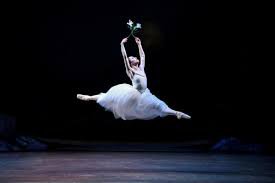
Being a ballet teacher means sharing the history of this rich and essential dance genre. Whether you have beginner students or advanced, sharing the relevance of something like the Romantic Ballet era is essential to understanding ballet history and how it affected and shaped ballet from there on. Below is a brief overview, some basic information and class content to get you started. Be sure to share with your ballet dancers which can also help inspire some lesson planning and curriculum development for the dance season ahead!
Enjoy and good luck in the studio!
Jess
- Romanticism was: A period which evolved from revolt against aristocratic social & political norms of the Age of Enlightenment.
**Embodied most strongly in the visual arts, dance, music, & literature where emotion was a source of aesthetic experience. Placed new emphasis on such emotions as trepidation, horror and awe.
- Characteristics of Romantic Ballet:
- Radical change in subject matter to suit the new general-public audience.
- Decline in royalty glorification. Increase in glorifying the ordinary citizen & the innocence, playfulness, loyalty & courage in their clashes with powerful people.
- Justice represented.
- Consummation of love not achieved in life came as reward after death. Strong element of the SUPERNATURAL. Ballerinas cast as supernatural beings in the forms of wilis, ghosts or sylphs.
- To further illusion, heavy fabrics of previous century’s court dances were replaced by light-weight, skirt fabrics still known today as the romantic tutu.
- “Sur les pointes” emerged …(dancing en pointe) to demonstrate illusion of skimming weightlessly.
- Ballerinas became the central figure of the ballets replacing men
- Famous Ballerinas of the Romantic Period:
- *Marie Taglioni (1804-1884)
- *Fanny Elssler (1810-1884)
- Fanny Cerrito(1817-1909)
- Carlotta Grisi (1819-1899)
- Lucille Grahn (1819-1907)
- Famous Romantic Ballets:
- La Sylphide: 1832 (created for Marie Taglioni)
- Giselle: 1841(created for Carlotta Grisi)
- Pas de Quatre: 1845 (created to bring Taglioni, Cerrrito, Lucile Grahn & Carlotta Grisi together onstage)
- Coppelia: 1870 (last ballet of the period)

